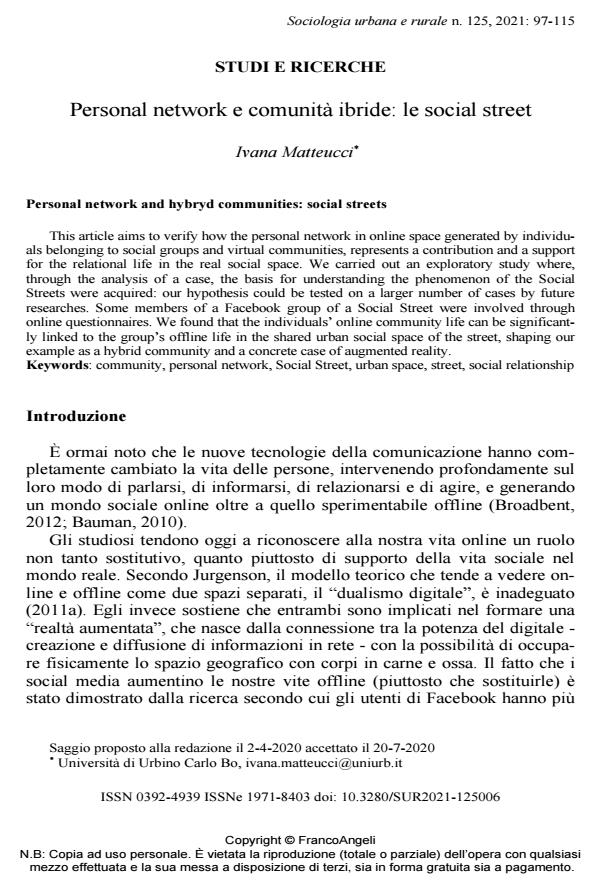Personal network e comunità ibride: le social street
Titolo Rivista SOCIOLOGIA URBANA E RURALE
Autori/Curatori Ivana Matteucci
Anno di pubblicazione 2021 Fascicolo 2021/125
Lingua Italiano Numero pagine 19 P. 97-115 Dimensione file 322 KB
DOI 10.3280/SUR2021-125006
Il DOI è il codice a barre della proprietà intellettuale: per saperne di più
clicca qui
Qui sotto puoi vedere in anteprima la prima pagina di questo articolo.
Se questo articolo ti interessa, lo puoi acquistare (e scaricare in formato pdf) seguendo le facili indicazioni per acquistare il download credit. Acquista Download Credits per scaricare questo Articolo in formato PDF

FrancoAngeli è membro della Publishers International Linking Association, Inc (PILA)associazione indipendente e non profit per facilitare (attraverso i servizi tecnologici implementati da CrossRef.org) l’accesso degli studiosi ai contenuti digitali nelle pubblicazioni professionali e scientifiche
Questo articolo intende verificare come il personal network generato nello spazio online tramite l’appartenenza ai gruppi social e alle comunità virtuali, rappresenti un contributo e un supporto alla vita relazionale del soggetto nello spazio sociale reale. É stato compiuto uno studio esplorativo dove, attraverso l’analisi di un caso, sono state gettate le basi interpretative per la comprensione del fenomeno delle Social Street, che in future ricerche potranno essere testate su un numero più ampio di casi. Con il metodo del questionario online sono stati coinvolti alcuni iscritti a un gruppo Facebook di una Social Street. Si è trovato che la vita comunitaria online dei soggetti può essere significativamente connessa alla vita offline del gruppo nello spazio sociale urbano condiviso costituito dalla strada, configurando il nostro esempio come comunità ibrida e caso concreto di realtà aumentata.
Parole chiave:comunità, personal network, Social Street, spazio urbano, strada, relazione sociale
Ivana Matteucci, Personal network e comunità ibride: le social street in "SOCIOLOGIA URBANA E RURALE" 125/2021, pp 97-115, DOI: 10.3280/SUR2021-125006